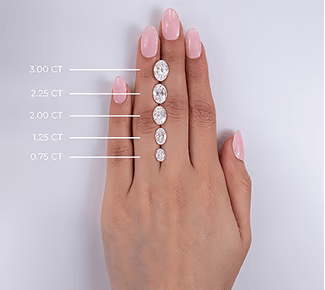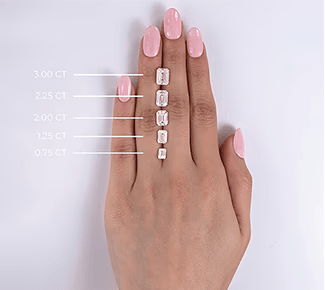Diamonds are graded and characterized by four main characteristics, which were originally created by the Gemological Institute of America (GIA). These four characteristics are color, clarity, cut, and carat weight, the 4Cs. Use this guide to learn about the 4Cs and familiarize yourself with the essential diamond characteristics that will make your diamond selection a more informed and streamlined process.
What the 4C’s are for Lab Grown Diamonds
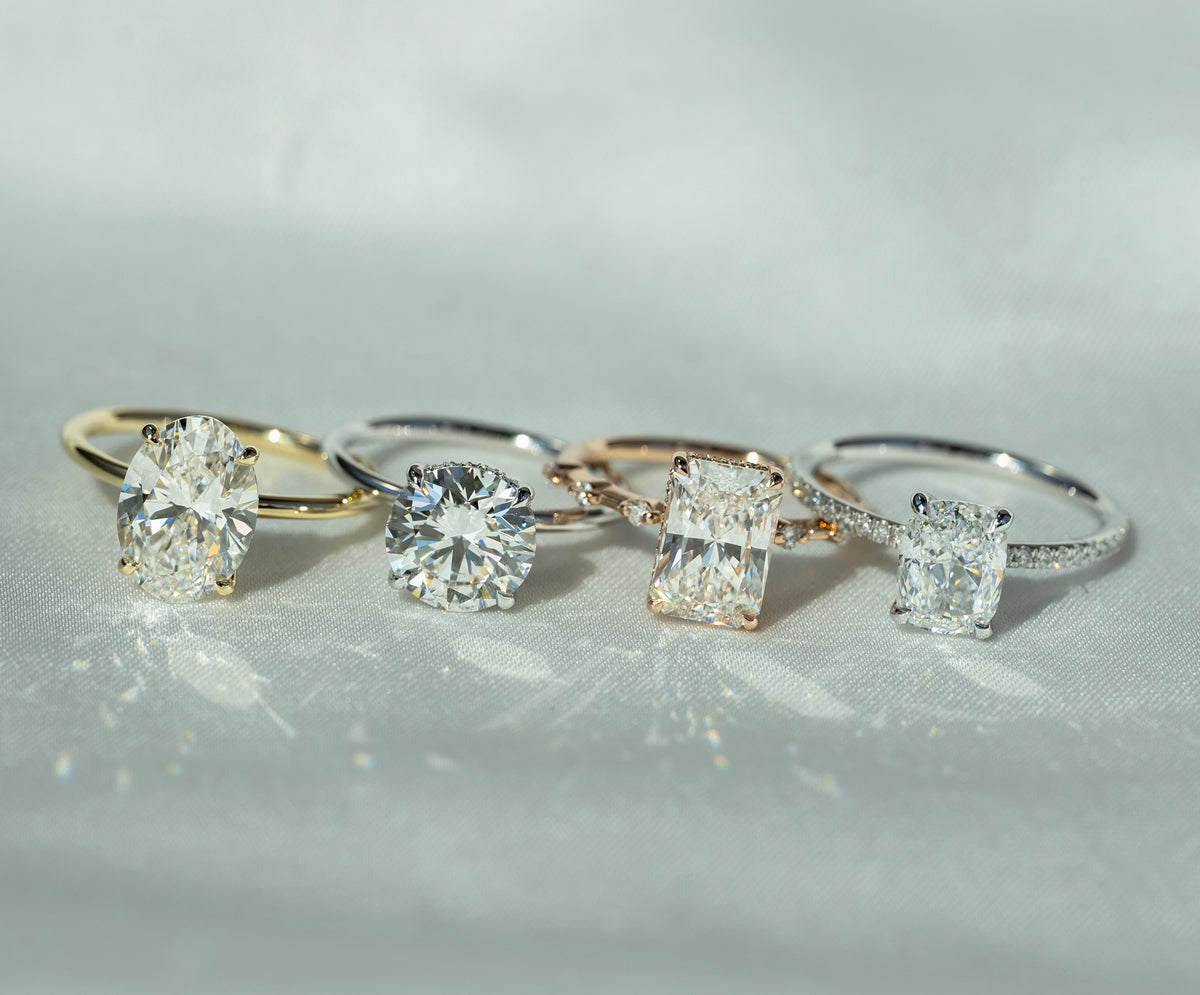
The GIA International Diamond Grading System was developed to standardize how diamonds are graded across the world, ensuring that buyers everywhere can make informed decisions based on a universal set of criteria. This system, which revolves around the 4Cs of diamond grading—cut, color, clarity, and carat weight—is detailed on the GIA diamond grading chart. Significantly, this grading system has been embraced by leading gemological institutes and bodies globally, including the International Gemological Institute (IGI). Notably, IGI set a precedent as the first major diamond grading laboratory to extend the 4Cs grading to Lab Grown Diamonds.
This adoption underscores the equivalency in validity, reliability, and trustworthiness between certificates issued by GIA and those by IGI. For our clients, it's important to understand that most of our diamonds come with IGI certificates, ensuring that they meet the same high standards set by the globally recognized GIA system.
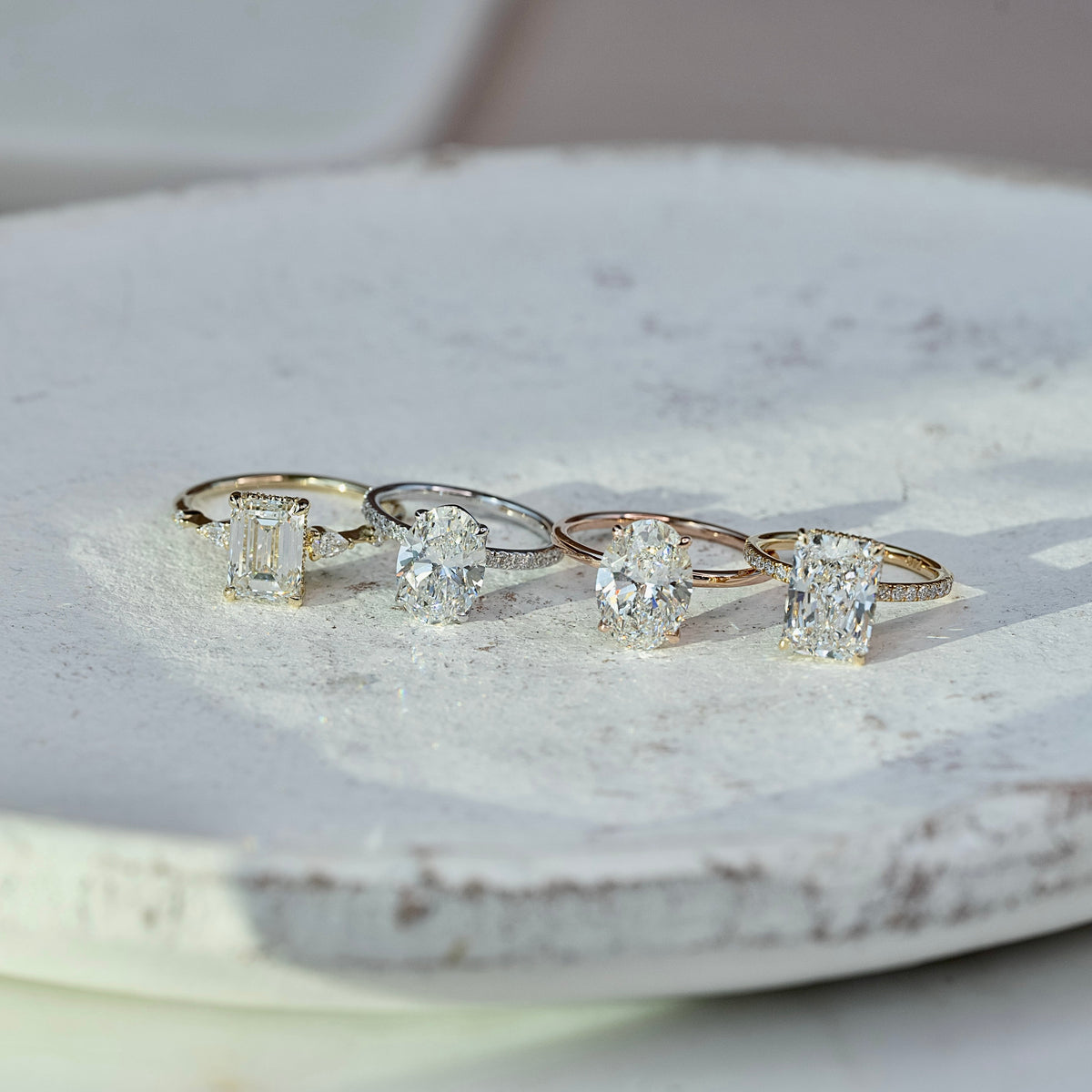
When buying loose diamonds or jewelry, like diamond engagement rings, they often come with a grading report from GIA or IGI providing details of the 4Cs, which can be used for appraisal and insurance purposes. Since lab grown diamonds are real diamonds, they are graded exactly as per the GIA natural diamond grading system, with the same exact parameters used for mined diamonds.
Lab created diamonds are physically, optically, and chemically identical to mined diamonds when compared side by side. This means that quality lab grown diamonds are also officially graded using the 4Cs by independent gemological organizations. The 4Cs of lab grown diamonds will vary, just like in natural diamonds, and they can range in grade from poor to excellent.
-
Learn the secrets of the 4Cs of diamond grading to shop like a seasoned expert, ensuring your diamond selection delivers peak quality and unmatched value.
Diamond Cut
A diamond’s cut doesn’t just refer to its shape; it determines how well the diamond captures and refracts light, which produces its inimitable sparkle. Well-cut diamonds are extremely brilliant, fiery, and desirable. Poor-cut diamonds, on the other hand, can appear dull and dark even if they have a high grade of color or clarity.
The intense radiance of well-cut diamonds also gives them the illusion of appearing larger than other diamonds of the same carat weight. Ideal diamonds have elevated levels of brilliance and diameter compared to diamonds with deeper cuts.
Cut is often considered the most important characteristic of the 4C’s. This is because it has the biggest impact on the diamond’s overall appearance and quality. Jewelers recommend paying attention to the cut of a diamond above all else.
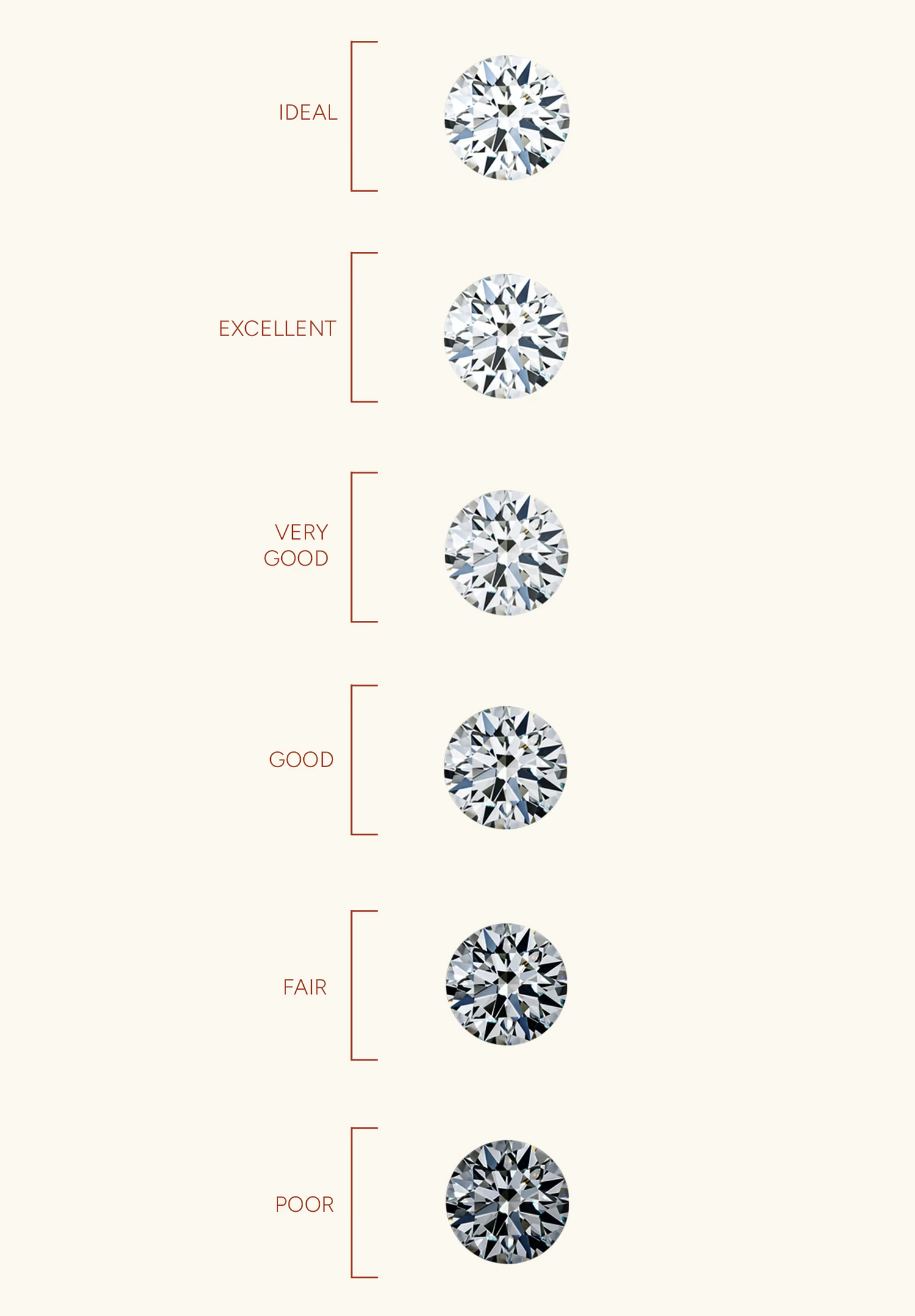
Types Of Diamond Cuts
The diamond’s proportions and symmetry define the quality of the cut. A high-quality cut can only be created by a highly skilled craftsman. Diamonds are graded according to a scale from Ideal to Poor. Even the untrained eye will notice that diamonds with higher cut grades are more sparkly than those with lower cut grades.
- Ideal Cut diamonds have outstanding sparkle and flawless symmetry. They are cut to perfect proportions for refracting light.
- Excellent Cut diamonds have exceptional sparkle and even patterns.
- Very Good Cut diamonds have great sparkle and polish. They are considered symmetrical.
- Good Cut diamonds have a fine sparkle. They have a reasonable level of polish and symmetry.
- Fair Cut diamonds have a low level of sparkle and polish. They are not always symmetrical.
- Poor Cut diamonds appear dim and asymmetrical, with uneven spots on their surface.
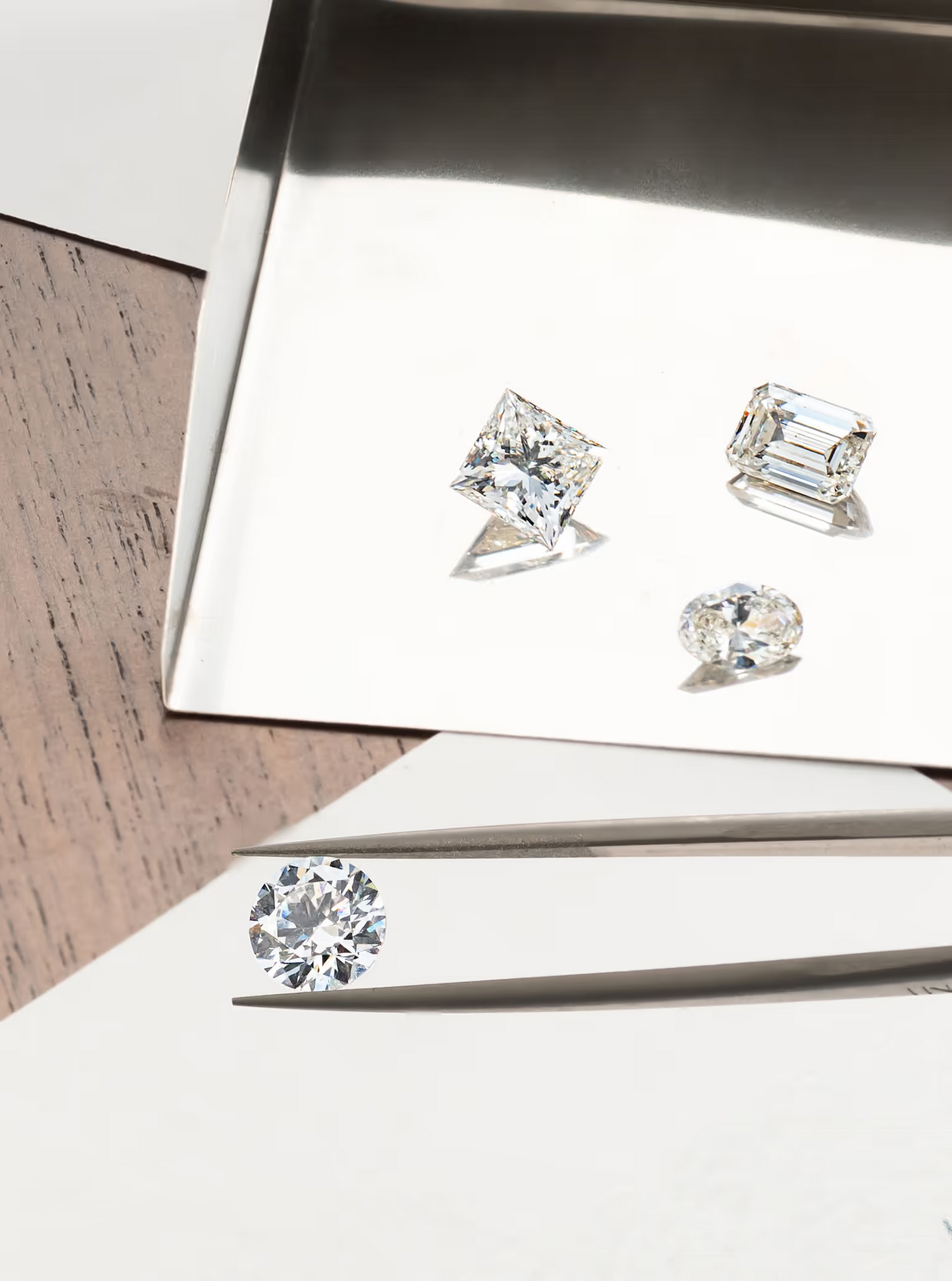
Round & Fancy Shape Diamond Cuts
Only round brilliant diamonds can have an Ideal Cut. The alignments of their facets make it easy to cut perfect proportions for optimal sparkle and symmetry.
Fancy shaped diamonds such as oval, pear, and emerald have different facet alignments, which makes it difficult to attain Ideal Cut level. However, this does not mean that fancy shaped diamonds are poor quality. They can still attain Excellent grades and offer exceptional brilliance and fire.
Brides who desire unique shapes shouldn’t feel like they’re sacrificing quality or beauty when choosing a fancy shaped diamond. Seek out diamonds with Excellent polish and symmetry grades to ensure you’re getting a high-quality stone that highlights your individuality.
Determining Cut in Lab Grown Diamonds
Lab grown diamonds are cut using the same processes and tools as mined diamonds and are therefore graded using the same system.
In addition to being a more ethical and cost-effective choice, lab grown diamonds also tend to have better cuts. Since the synthetic material they’re made from is usually more consistent and has fewer flaws than natural diamonds, it’s easier for cutters to shape them into high-quality stones. This means lab grown diamonds are often cut in a way that brings out their sparkle and beauty.
Cut should be your biggest priority when selecting a diamond since it directly impacts its radiance. Clarity, color, and carat weight can all be secondary factors. Remember that a smaller diamond with a higher quality cut will be more alluring than a larger stone with a worse quality cut.
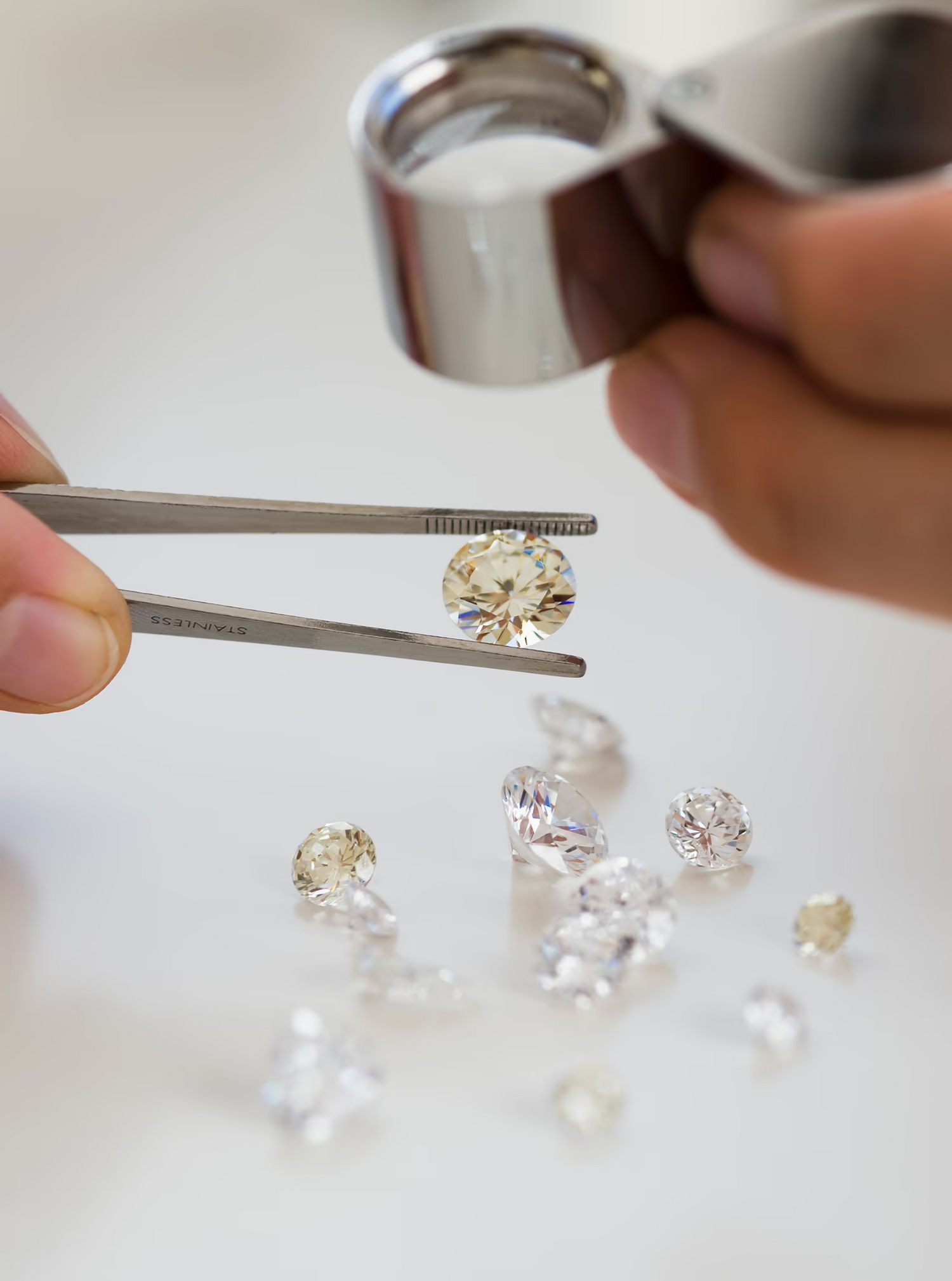
Diamond Color
When looking for the perfect diamond, choose a stone with the least amount of color. Five broad types of diamond color are distinguished on a scale from D to Z: colorless, near colorless, faint, very light, and light.
This grade refers to the lack of color in a diamond. The less color it has, the higher the brilliance and the more it will sparkle. Diamonds are available in every color of the rainbow. However, colorless or white diamonds are traditionally the most valuable.
Jewelers recommend choosing a stone with the least amount of color possible if you want a traditional look. Those who aren’t opposed to color need not worry. However, color is often considered the second most important C since it can impact the diamond’s value.
The Diamond Color Scale
Diamond color is graded on a scale of D-Z. Each grade is divided into one of five categories:
- Colorless
- Near colorless
- Faint
- Very Light
- Light
A colorless diamond is almost pure white, while lower grades have a yellowish tint. The trace element of nitrogen causes this. Completely colorless diamonds are considered to be chemically pure and structurally perfect; imperfections and impurities are what cause color variations within diamonds.
Color differences are challenging to determine for an untrained eye. Generally, you won’t be able to see a difference unless the diamonds are two color grades apart, and even then, it will depend on the position of the diamond. If a diamond is face up, which it likely will be, the naked eye won’t see any color. You may see traces of color from the diamond’s side profile, which the ring mount will partially hide.
- Colorless diamonds are grades D-F. These are the rarest and most valuable diamonds of all. They show almost no color. F grade diamonds will have a tiny trace of color, but it will only be visible to gemologists if viewed face down.
- Near colorless diamonds are grades G-J. Diamonds in this range appear colorless when viewed face up but will display trace amounts of colors if viewed face down against a white background. The color will not be visible to an untrained eye once mounted. Near colorless diamonds provide excellent value for money.
- Faint color diamonds are grades K-M. This category features diamonds that might show a trace of color in the face up position. It’s an excellent option for those who enjoy color and want to extend their budgets.
Diamonds in the very light or light categories will often have a yellow hue. Sometimes they may have a brownish hue. These are known as champagne or cognac diamonds, depending on the intensity of the shade. While yellow is caused by nitrogen, brown is thought to be caused by internal graining. The earthy color is a result of structural irregularities combined with impurities like nitrogen.

Diamond Clarity
A diamond’s clarity refers to the presence of impurities on and within the stone. Even when grown in a lab, tiny imperfections might be visible. These are called flaws or inclusions. They form during the growing process and are unique to each stone. The term "eye clean" refers to diamonds whose inclusions generally cannot be seen without magnification and are typically graded SI or higher on the clarity scale.
Clarity impacts the stone’s ability to let light pass through the stone. Inclusions can cause dispersion blockages, which affect the diamond’s overall brilliance and sparkle. The fewer inclusions a diamond has, the more rare and valuable it will be considered. Flawless diamonds, or stones with no imperfections, are the most prized.
If you want a diamond that maintains its brilliance without any visual distractions, select a gem without inclusions. To ensure the highest likelihood that your diamond will be completely free from imperfections visible to the naked eye, opt for diamonds graded "VS1" or higher.
Diamond Clarity Grades
All diamonds are graded based on their clarity. Grading is determined by closely examining the diamond under 10X magnification. A gemologist will note the quantity, relief, and placement of inclusions to identify the clarity grade.
The clarity grading scale runs from Flawless (FL) to Included (I3). Some grades have different categories within the grade, like Very Very Slightly Included 1 and Very Very Slightly Included 2. The higher the number after grading, the more inclusions will be visible on and within the diamond.
- Flawless (FL). No imperfections or inclusions on the diamond’s surface. This is the rarest and most valuable type of diamond.
- Internally Flawless (IF). No visible imperfections or inclusions on the diamond’s surface, even under magnification. Although the diamond appears flawless, it still may have very minor inclusions that are difficult to see.
- Very Very Slightly Included 1 (VVS1) & Very Very Slightly Included 2 (VVS2). No visible imperfections or inclusions to the untrained eye. Minor inclusions may be visible under magnification.
- Very Slightly Included 1 (VS1). Small imperfections or inclusions may be visible under close inspection.
- Very Slightly Included 2 (VS2). More minor imperfections or inclusions may be visible.
- Slightly Included 1 (SI1), Slightly Included 2 (SI2) & Slightly Included 3 (SI3). Small imperfections and inclusions are visible, even to an untrained eye.
- Included 1 (I1), Included 2 (I2) & Included 3 (I3). Imperfections and inclusions are clearly visible.
The most prized diamonds are called “eye clean diamonds.” This term refers to diamonds whose inclusions cannot be seen without magnification. They are usually graded VS1 or higher.
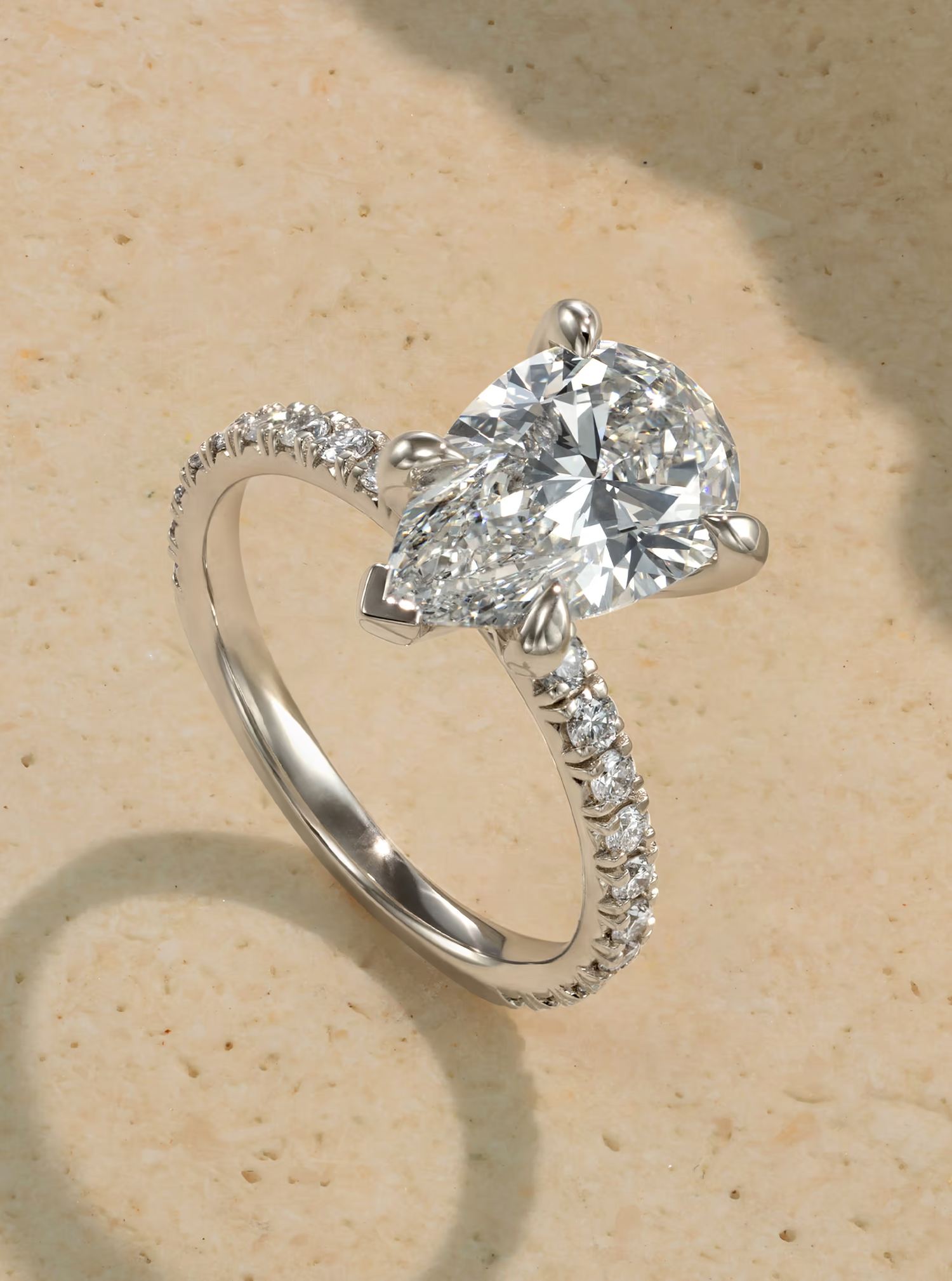
Clarity In Diamond Shapes
The shape of a diamond can affect its clarity. This is because certain shapes hide imperfections better than others.
Brilliant cut shapes, such as round and princess, are better at hiding imperfections than step-cut shapes, such as emerald and asscher. The large, open tables of step-cut shapes make inclusions more visibly noticeable, while the high level of facets in a brilliant cut makes inclusions more difficult to spot. This doesn’t mean you need to avoid step-cut diamonds. However, you should choose step-cut stones with a higher clarity grade.
Generally, the best diamond shapes for hiding inclusions are brilliant cuts in round, cushion, oval, radiant, or pear forms. You can choose diamonds with clarity grades as low as SI1 or SI2 with these shapes.
Pay close attention to the clarity grade if you’re looking for a diamond with a clean sparkle and impeccable brilliance. Any brilliant cut diamond with a grading of VVS2 or higher should meet your needs, but look for VS2 or higher for step-cut diamonds.
Diamond Carats
Carat is the unit of measurement for the physical weight of diamonds and is one of the most objective measurements of the Four Cs for determining the value of a diamond. One carat is equal to 200 milligrams or 1/5 of a gram. Once the weight in milligrams is determined, the diamond is subdivided into 100 points. This ensures an ultra-precise measurement to the hundredth decimal place. Typical diamond weights range from 0.25 carats to 5 carats.
Carats are one of the most objective measurements of the 4Cs for determining the value of a diamond. It directly corresponds to the weight of a diamond, while other Cs are more subjective. The carat weight of a diamond determines how big it is. Up to 2/3 of the total carat weight may be lost when raw diamonds are cut and polished into finished diamonds.
The name "carat" derives from carob, the popular chocolate substitute. Carob seeds were the standard measurement tool for diamonds up until the 20th century. Their small size and consistent shape made them an effective counterweight for diamonds.
Share information about your brand with your customers. Describe a product, make announcements, or welcome customers to your store.
Carats and Diamond Size
It’s important to remember that carats only determine the weight of a diamond, not its size. Shape, weight distribution, and cut quality also impact a diamond’s size. This means that two diamonds of the same carat weight can have different sizes.
However, a high carat doesn’t necessarily equate to a better diamond. A diamond with a small carat and high-quality cut will be more brilliant and beautiful than a diamond with a large carat and poor-quality cut. Most loose diamonds available for sale are one carat or less. The average engagement ring is also less than a carat.
High-quality diamonds with a high carat are very valuable. High-quality gems are harder to find in large quantities of rough, which means a single 2 carat diamond will cost more than two 1 carat diamonds of the same quality.
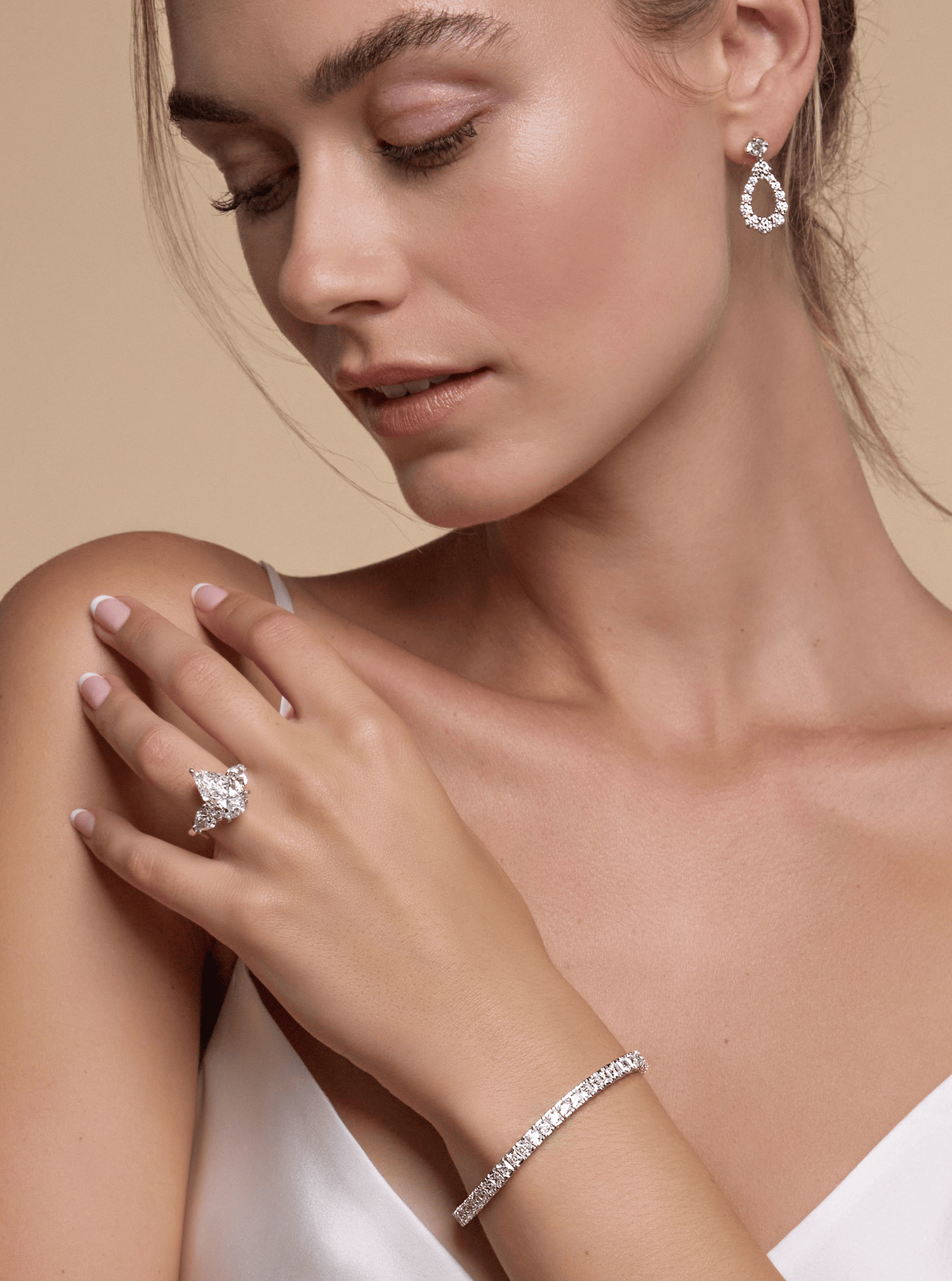
Carats & Diamond Appearance
Although we are often taught that bigger is better, this is not always the case with diamonds. Jewelers recommend paying more attention to the surface area of a diamond than its carat size, since it’s the more visible characteristic.
A diamond will increase in weight more than it increases in surface area. For example, a 0.50 carat diamond has a surface area of 5.1mm, while a one carat diamond has a surface area of 6.5mm. That’s only a 27% increase in surface area, despite having double the weight.
Additionally, differences in carat sizes can appear very minimal to the untrained eye. A 0.25 carat diamond will be noticeably smaller than a 2 carat diamond, but the difference in size between a 0.90 carat and a 1 carat diamond will not be substantial.





